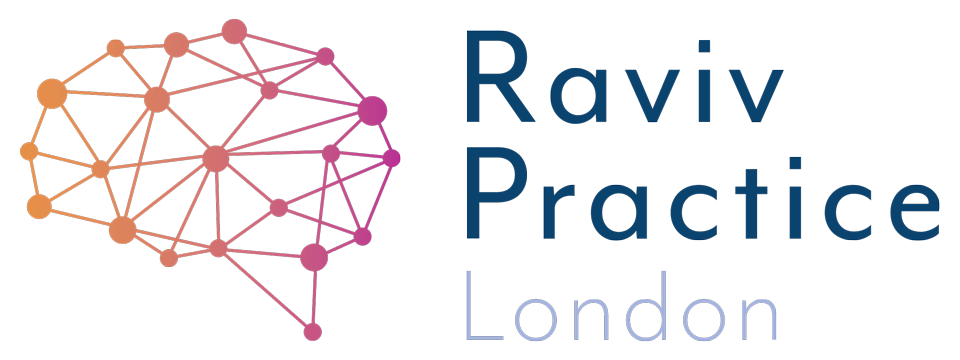
Blog
Usha Patel, Neurocognitive Therapist and Director of Raviv Practice London shares her first-hand experience of working with children /adults and the latest research and upcoming events in her series of blog posts.
How can I help my pre-school child with their writing skills?
Think your preschooler’s wall scribbles are just mischief? They may actually be building vital writing skills. Here’s how to support them the right way.
How to work with your ADHD to achieve success
ADHD minds are fast, creative and full of potential, but how do you finish what you start? In this blog post learn tools that help you harness your ideas and succeed.
How can I get rid of my child’s fear of maths once and for all?
Stress and anxiety about studying maths is very common among children of all ages. You might even remember yourself struggling with it at school, or maybe you found a way to get to grips with it. In this blog, learn what’s really holding them back and how to help them finally enjoy numbers.
Are you worried about your child making friends in reception?
Starting school can feel overwhelming for some children, especially when it comes to making friends. This blog shares practical tips on how to boost your child’s confidence, help them build social connections, and ensure they feel happy and supported during their early school years.
Remove random, by anchoring rhythm
When I started working together with seven year old Kiran, I knew I had taken on a big challenge. Our initial sessions would entail a lot of resistance and crying for no apparent reason. Things changed when I started using Bal-A-Vis-X
Why can my child not learn the alphabet?
Does your child find it hard to remember the order of the alphabet? Understanding sequencing and executive function skills is key. In this blog, learn how movement, games, and hands-on activities can help them master the ABCs.
Is your child graduating from nursery to school?
A child’s life is full of milestones, and sometimes it seems like they flash by in a blur! One day they are a tiny infant in your arms, and then suddenly they are off to nursery. It only seems like 5 minutes after that they are getting ready to go to school full-time.
Practical steps to help your child with handwriting before primary school
If your child is has graduated from nursery and is now going to start primary school, and you're worried about their lack of interest in holding a pencil, crayon, or paintbrush, this blog is for you.
Why does my child stick his tongue out when writing?
Tennis is seldom played quietly, and the players make grunting sounds as they hit difficult volleys across the net. This is a great example of how we link actions of our hands and mouths together when we perform an activity.
Why can’t my child open a packet of crisps?
If your child avoids opening crisp packets or tying shoelaces, they may have weak hand grasp. Learn how reflex therapy, finger exercises and everyday activities can help build fine motor skills.
What is the best way to help my undiagnosed child, age six?
Is your happy, curious child dreading school but thriving on weekends? If you suspect a learning difficulty like dyslexia but can’t get a diagnosis yet, this blog is for you. Learn how to support your child at home with simple, powerful strategies that boost confidence, build cognitive skills like working memory, and make learning joyful again.
What is working memory, and why is it so important?
What is working memory, and why is it so important? If your child has difficulties following instructions, is challenged with mental maths or reading comprehension understanidng working memory is the first thing you need to learn about.
Why is my child’s body always floppy, and why does he run funny?
If your child always seems floppy, uncoordinated, or runs funny, you’re not imagining it. These movement quirks may be early signs of deeper neurodevelopmental gaps, often missed in traditional assessments. From reflex integration to parent-led therapy like Bal-A-Vis-X, this blog explores how to decode your child’s movement challenges and what steps you can take to help them thrive.
My Bal-A-Vis-X story, and how it could help you!
This is the story of how a call from Zimbabwe changed everything. Learn how bal-a-vis-x supports brainwave activity, helping children improve focus, coordination, and learning through structured movement and rhythm.
What is motor planning?
Motor planning is the ability of the body to create movement so we can perform a task. When playing with mobiles, babies will thrash their arms and legs on seeing the suspending toy. They aim for the toy but do not grab it.
Help! My child can’t decide which hand to write with!
Many children don’t settle on a dominant handwriting hand by age 5, but persistent uncertainty can cause confusion and delays. In this blog, we explore how reflex integration, bilateral coordination, and therapeutic tools like bal‑a‑vis‑x can gently guide your child toward confident handwriting and motor control.
Why we should all use punctuation stickers
Punctuation and reading rhythm don’t come naturally to every child. Learn how movement-based methods like bal-a-vis-x can improve coordination, comprehension and language fluency.
Why won’t my sister play with me?
When one child has autism or delayed speech, sibling play can be tough but targeted support and therapy can help families find harmony again. Chatty little Yasmin was eager to play with her older sister. Yasmin wanted to play with dolls and toys and have fun with her older sibling.
Why can’t my child catch a ball?
If your child consistently struggles with catching or throwing a ball, it may be more than just clumsiness. From reflex integration delays to poor hand-eye coordination and dyspraxia, this blog explores the deeper reasons behind these challenges. Discover how movement therapy and targeted exercises can help your child improve focus, balance, and physical confidence.
It only takes a minute to find your flow
More and more individuals are showing signs of ADHD. The fast-paced world we live in, and all its many distractions, means we are constantly flitting from one task to another. So, how can you solve such a prevalent problem and stay on task?






















